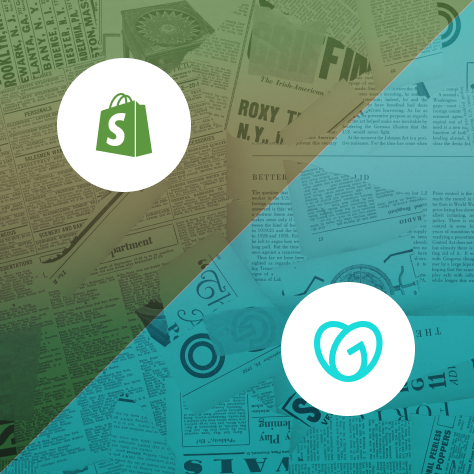Chatbot ROI: Measuring the Impact of Conversational AI in E-commerce
Imagine walking into a store where every employee knows your name, remembers what you bought last time, and can instantly answer any question you have, 24 hours a day, 7 days a week.
That's what conversational artificial intelligence (AI) brings to the world of e-commerce. What started as simple rule-based bots that could barely handle basic questions has evolved into sophisticated assistants that can learn from conversations and even predict what customers need before they ask.
Small boutique stores are using these tools to compete with retail giants. Mid-size companies are scaling customer service without hiring armies of support staff. Enterprise retailers are creating personalized shopping experiences that would be impossible with human agents alone.
The question is no longer whether chatbots can provide value to e-commerce businesses; that much is clear. The question organizations now face is how to measure and maximize their chatbot’s return on investment (ROI).
Understanding Chatbot ROI
ROI from AI chatbots comes from three primary value drivers:
1. Cost Savings
While most investments drive financial return by increasing revenue, chatbots have traditionally helped companies lower their operating costs. Automating routine tasks and responses to common questions significantly decreases the need for human customer service agents.
2. Revenue Generation
Today's AI chatbots go beyond cost-cutting to become active revenue drivers. They are sales assistants, personal shoppers, and brand ambassadors, often rolled into one system. These capabilities allow conversational AI to boost e-commerce revenue through several avenues:
- 24/7 Sales Support: AI chatbots offer immediate support to reduce customer hesitation, including times when your human team is offline.
- Abandoned Cart Recovery: Chatbots can proactively engage customers abandoning their shopping carts, offering assistance or incentives to finalize the purchase.
- Personalized Product Recommendations: Advanced chatbots analyze customer behavior and purchase history to suggest relevant products, increasing conversions and order values.
3. Customer Satisfaction
Customer satisfaction might be harder to quantify than direct cost savings, but it's still a crucial component of chatbot ROI. Happy customers spend more, return more often, and recommend your store to friends. An AI chatbot that consistently meets expectations builds loyalty that translates into long-term business value.
Forecasting Chatbot ROI Before You Buy
Before committing to a solution, it’s smart to forecast the potential return based on your store’s unique situation. Getting a clear upfront estimate helps you set realistic expectations and compare options with confidence.
The Rep AI ROI Calculator simplifies the forecasting process by taking your monthly site visitors, conversion rate, average order value (AOV), and industry to estimate potential revenue gains from the AI concierge.
It’s a quick, data-backed way to project chatbot impact and guide your investment decision.

Measuring the Return on Your Chatbot Investment
The following six-step framework provides a structured approach to calculating your chatbot's true return on investment.
Step 1: Gather Baseline Metrics
Before measuring your chatbot’s impact, you need a current performance baseline. These key performance indicators (KPIs) will help to measure improvement accurately:
- Ticket Volume
- Average Handling Time (AHT)
- Cost Per Interaction
- First Contact Resolution (FCR)
- Customer Satisfaction (CSAT)
If the chatbot interacts with potential customers in a sales capacity, you’ll also want to record your current conversion rates.
Step 2: Identify Automatable Queries
The next step is to identify the customer interactions the AI can handle. Start by analyzing your existing customer service logs. Common automatable queries include:
- Order status checks
- Product availability questions
- Basic sizing and specification inquiries
- Return and exchange policy questions
Once you've identified automatable queries, calculate what percentage of your total customer service volume they represent.
Step 3: Estimate Cost Savings
Now comes the fun part: calculating how much money your chatbot saves by handling inquiries automatically. Take your current customer service cost per interaction and multiply it by the number of automatable queries from the previous step.
For example, if your customer service representatives earn $21 per hour and handle an average of 6 conversations per hour, each interaction costs you $3.5 in direct labor. If your chatbot handles 2,000 interactions monthly that would otherwise require human agents, you're saving $7,000 per month in direct costs.
With Rep AI, you don’t need to manually determine cost savings. The support analytics in the platform does it for you by tracking deflected support tickets and calculating the potential savings from ticket reduction.

Step 4: Assess Revenue Impact
Recognizing chatbot revenue requires analytics tools that identify customers who interact with your bot and then make purchases within a reasonable timeframe. This will typically be 24-48 hours for immediate impact, up to 30 days for longer consideration cycles.
Some advanced AI chatbot platforms, like Rep AI, include built-in analytics specifically designed to track sales attribution and calculate potential cost savings from reduced support tickets. These integrated analytics eliminate the need for complex custom tracking setups and provide real-time visibility into revenue impact.

Step 5: Factor in Implementation Costs
After calculating the added revenue and cost savings from the AI chatbot, you’ll need to determine the total cost of implementing the solution. This will allow you to calculate an accurate return on the investment.
Most chatbot platforms use a subscription pricing model. Costs may be based on usage, such as conversations, active users, or support tiers, and can scale significantly depending on interaction volume and complexity.
One-time costs apply when building a custom solution or purchasing a license. Custom builds require upfront investment in conversation design, persona development, NLU training, and backend integration.
The cost to develop a chatbot ranges from $5,000 for simple, rule-based systems to upwards of $500,000 for sophisticated AI-powered platforms.
Step 6: Calculate Your Return
Now you can calculate the return on your chatbot investment using the formula:
ROI = (Total Benefits - Total Costs) / Total Costs × 100
Here's an example calculation:
Monthly Costs:
- Chatbot platform subscription: $500
- Maintenance and updates: $200
- Total Monthly Investment: $700
Monthly Benefits:
- Cost savings from automated interactions: $2,100
- Revenue from shopping assistance conversations: $1,200
- Cart recovery revenue: $800
- Total Monthly Benefits: $4,100
ROI = ($4,100 - $700) / $700 × 100 = 486%
This means that for every dollar invested in the chatbot, the business sees a return of $4.86 in benefits.
Remember to calculate ROI over different periods. While monthly ROI gives you operational insights, annual ROI provides a better picture of long-term value, especially when accounting for seasonal variations in e-commerce.
Real-World Example of Conversational AI Driving E-Commerce ROI
As Create Wellness expanded its online presence, the brand faced a familiar growing pain: how to deliver helpful, personalized support without overwhelming its team. Customers often needed guidance to find the right products for their wellness goals, but agents were bogged down answering the same routine questions again and again.
Rep AI offered a transformative solution. Acting as a smart, always-on shopping assistant, the AI delivered instant, conversational responses that matched the context of each customer’s inquiry. From surfacing ingredient details to recommending the right supplements, the chatbot created a frictionless path to purchase.
The impact was immediate. Shoppers who interacted with the AI chat had an average order value of $94, 25% higher than the brand’s typical AOV. The chatbot also re-engaged high-intent customers, recovering 35% of abandoned carts through timely and personalized outreach.
Check out other case studies to see how Rep AI’s chatbots drive measurable ROI for e-commerce brands.

Challenges in Measuring Chatbot ROI
While calculating chatbot ROI is essential for optimizing your investment, it's not without its complexities. Let's examine the most common challenges in measuring an accurate return:
Attribution Difficulties
One of the biggest challenges in measuring chatbot ROI is accurately attributing sales to your bot's efforts. Modern customers interact with businesses through multiple touchpoints before buying, making it difficult to isolate a chatbot's specific contribution.
A customer might first discover your products through social media, visit your website, chat with your bot about sizing, leave to compare prices elsewhere, return a few days later to read reviews, and finally purchase after receiving an email promotion. In this case, how do you value the chatbot’s impact?
Data Quality Issues
Accurate ROI measurement depends on clean, complete data. Unfortunately, data quality issues are common in chatbot implementations, leading to skewed calculations and misguided optimization decisions.
Common data quality problems include incomplete conversation logging, inconsistent customer identification across channels, and missing integration data from backend systems.
Quantifying Intangible Benefits
Some of a chatbot’s most valuable impacts are difficult to measure directly. Improved brand perception, increased customer loyalty, and enhanced competitive positioning all contribute to long-term business success but don't show up in simple revenue calculations.
Getting Started with Chatbot ROI
Whether you're just beginning to explore chatbot implementation or seeking to optimize an existing system, the framework and insights provided here will help you measure, understand, and maximize the impact of conversational AI on your business.
Rep AI provides Shopify merchants with the tools to achieve strong chatbot ROI through sophisticated AI designed specifically for e-commerce. The platform combines advanced behavioral insights with built-in analytics to track sales attribution, cost savings, and customer sentiment automatically. You can start a free trial to discover how Rep AI can drive measurable results for your Shopify store.






-min.webp)

.png)






















.svg)


.svg)











.png)

%201.png)



.svg)
.svg)
